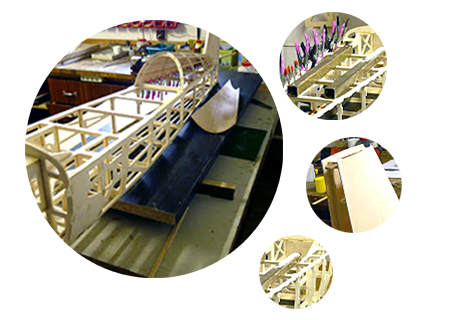Design and production of airplane models
We have started designing and producing kits back in 2010 when we built our first CNC milling machine. The models are designed in 3D CAD software. This approach allows us to best fine tune the final design and discover eventual design issues at the same time in contrast with a classical 2D design. We are inspired by the real ultralight aircraft building process during the design of our models. Many aspects of the construction have been discussed with ultralight aircraft engineers.
CNC milling is used as much as possible for production of kits and tooling. All parts (wherever possible) are interlocked. This approach guarantees the symmetry of the model and does not allow parts to be assembled together incorrectly. The parts are not cuts based on paper sheets or "some" semi-finished products to build a model but completely 3D designed construction.
The wooden construction brings an advantage of the simple repairs if needed. There are no additional reinforcement frames needed causing weight increase. Broken part can be easily cut away at an angle; the interlocks in the remaining non-damaged parts can be cleaned up and new parts simply reattached again. This way of fixing does not increase the weight and does not limit the number of eventual repairs either.





